Utah's DOT Recommends $729 Million Gondola-B Alternative for Little Cottonwood Canyon
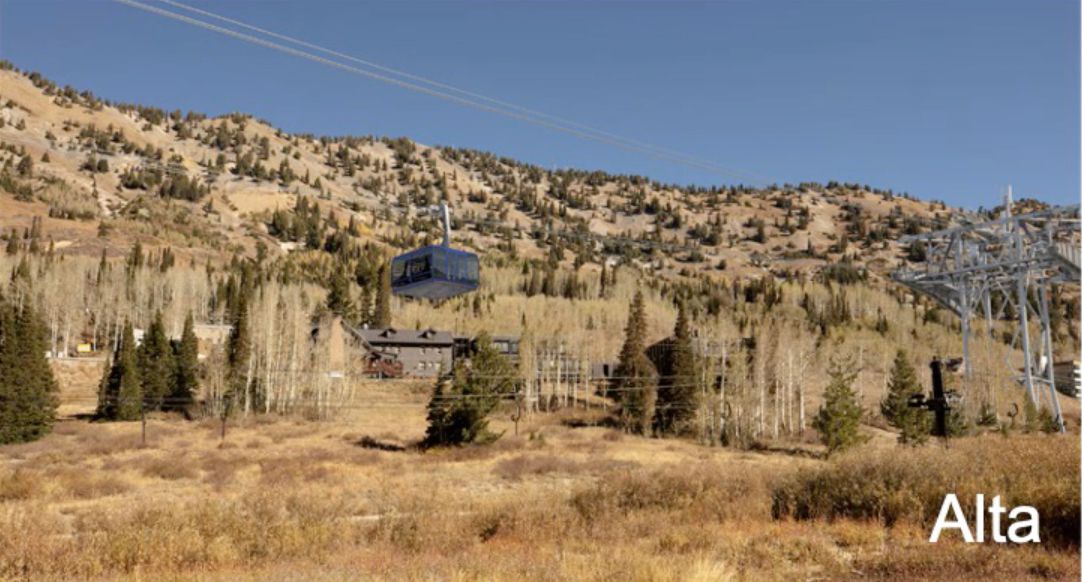
$150 Million in funding was authorized earlier this year by Utah's Legislature to help pay for Phase I of the 3-Phase project, beginning with 1) creation of a Park & Ride at the gravel pit near the base of the canyon, 2) expansion of canyon bus service, and 3) launch of a toll service above the White Pine trailhead. Once Phase 3 is completed (at a yet-to-be-determined future date), canyon bus service will be eliminated.
After more than five years of formal discussion, coordination, research, planning, and more*, the Utah Department of Transportation yesterday announced that it is recommending that work proceed forward on the $729 million Gondola B Alternative to address transportation issues in Little Cottonwood Canyon.
{NOTE: This amount does not include the estimated additional cost of $175 million to operate and manage this system for 30 years after it three phases become operational.}
Formally known as its Record of Decision (ROD) for the Little Cottonwood Canyon Environmental Impact Statement (EIS), UDOT's final EIS and its recommended three-phase implementation is described in the news release this way:
"(The Gondola B option) best meets the project purpose and need, and the short- and long-term transportation needs for the canyon."
According to 2016 research noted in the ROD / EIS, there are roughly 1.2 million vehicle trips each year in Little Cottonwood Canyon, which equals ~2.1 million visitors annually.
Given this reality, UDOT has been focused on exporing different alternatives to reduce canyon traffic by 30%, with five options given primary consideration, specifically
- Enhanced Bus Service WITHOUT roadway expansion for increased vehicular capacity);
- Enhanced Bus Service WITH roadway expansion for increased vehicular capacity);
- Gondola A (from the canyon Park and Ride, WITHOUT roadway expansion);
- Gondola B (from the gravel pit near the base of the canyon, WITHOUT roadway expansion); and
- COG Rail (from the gravel pit near the base of the canyon, WITHOUT roadway expansion).
As shown in the chart below, the first phase of the Gondola B option will be ready by Fall 2025 as funded through the $150 million authorized in Senate Bill 2 by the Utah state Legislature earlier this year.
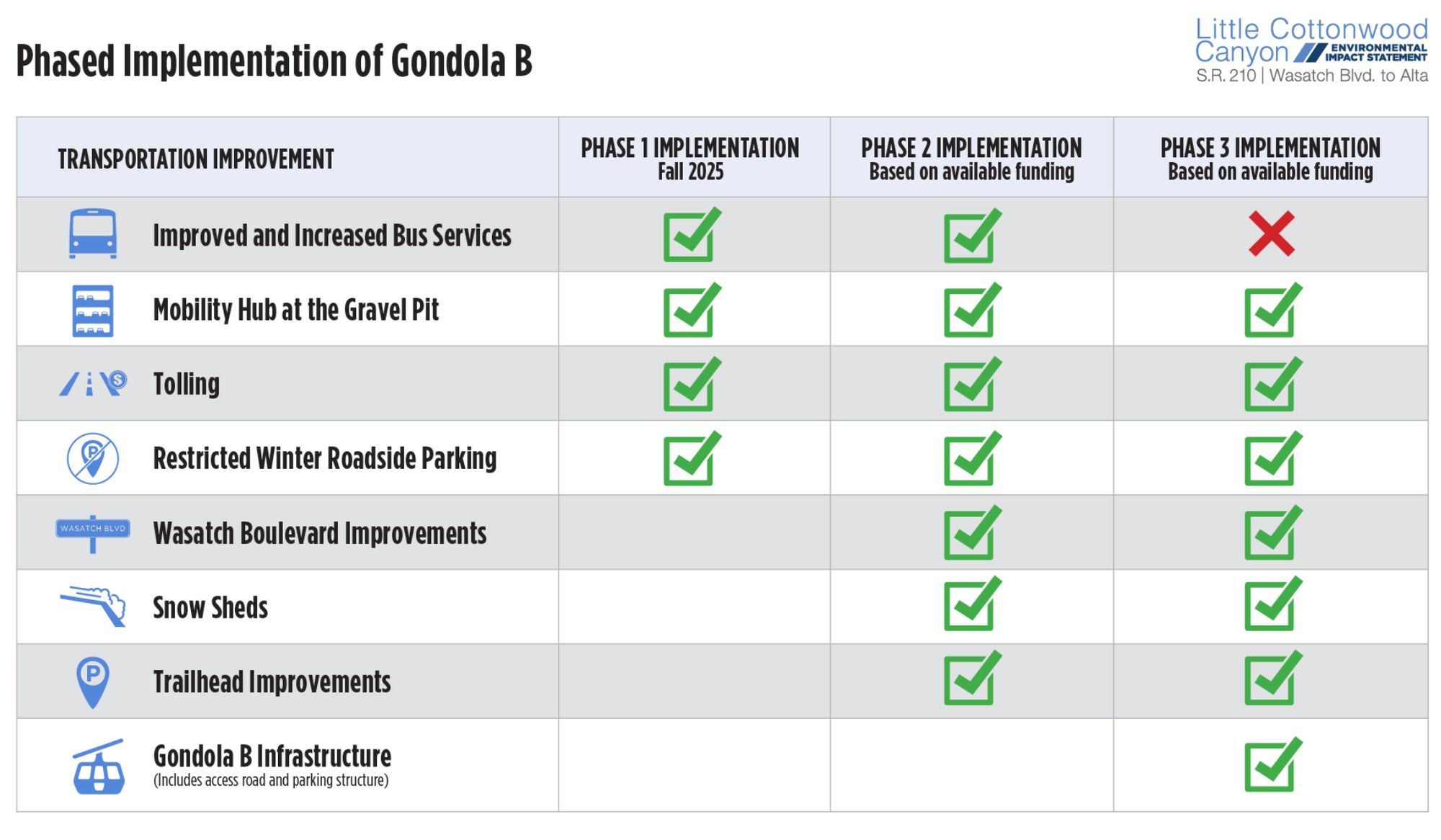
And, as explained in the ROD / EIS, one thing that will happen starting Fall 2025 is that State Route 210 will become a toll road up canyon from the White Pine trailhead, with a likely fee of $25 - $30 per vehicle per trip (depending upon traffic loads).
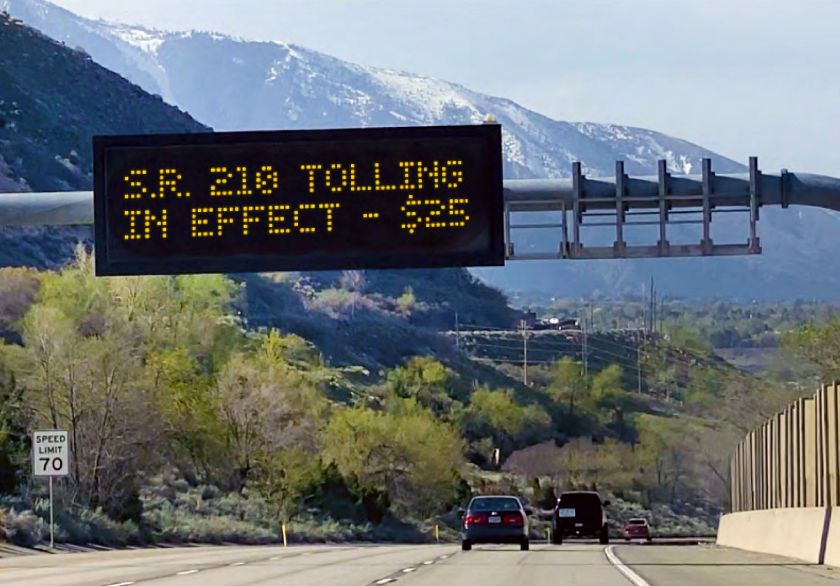
Of course, Little Cottonwood Canyon is home to two of the most widely honored winter sports resorts in the world:
- Snowbird Ski and Summer Resort, and
- Alta Ski Area, just over one mile up State Route 210 from Snowbird.
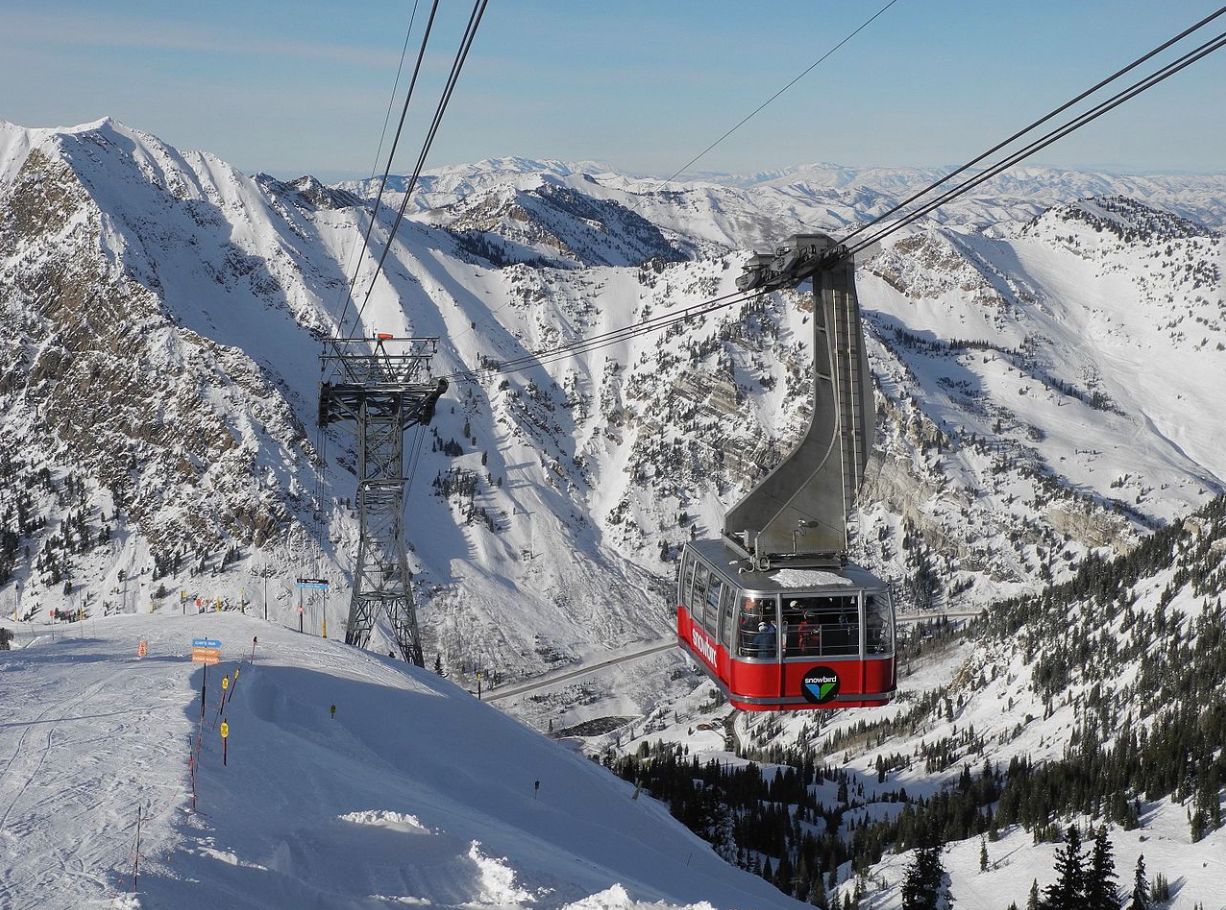
Although the two resorts, Alta and Snowbord, seem to attract the most attention from detractors of any effort to enhance access to winter sports opportunities in Little Cottonwood Canyon, the data actually show that there is nearly equal demand by the public during the so-called off-season, including
- Hiking,
- Backpacking,
- Camping,
- Cycling,
- Fishing,
- Picnicing, and
- Rock-climbing,
just to name a few activities.
This was new information to me and something I was surprised to learn.
That being said, UDOT was quite clear in its ROD / EIS that funding sources have NOT been identified, or secured, for Phase II and Phase III of this Gondola B Alternative program, something I'm not surprised about, per se, but something I did find a bit disconcerting.
Nevertheless, to gain a greater appreciation of the overall scope of UDOT's recommendations, I invite you to watch its two YouTube videos below that it published yesterday.
* - During this five-year process, UDOT reports that it worked with such entities as Salt Lake City's Public Utilities Group, the U.S. Army Corps of Engineers, U.S. Department of Agriculture Forest Service, U.S. Environmental Protection Agency, and the Utah Transit Authority.

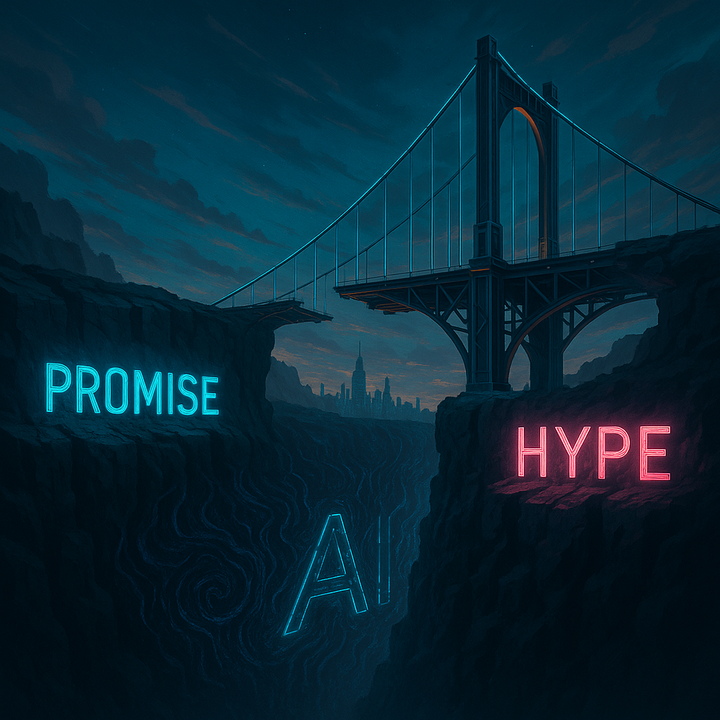


Comments ()